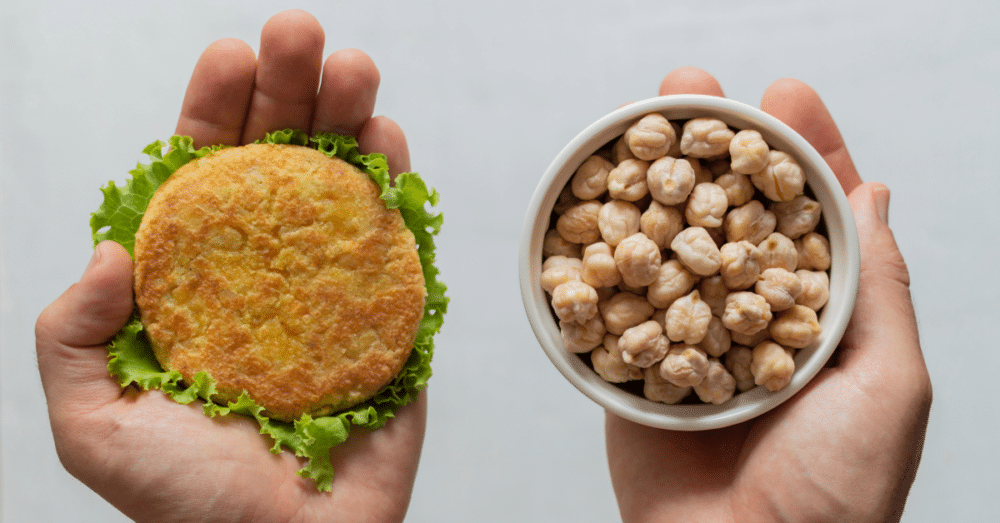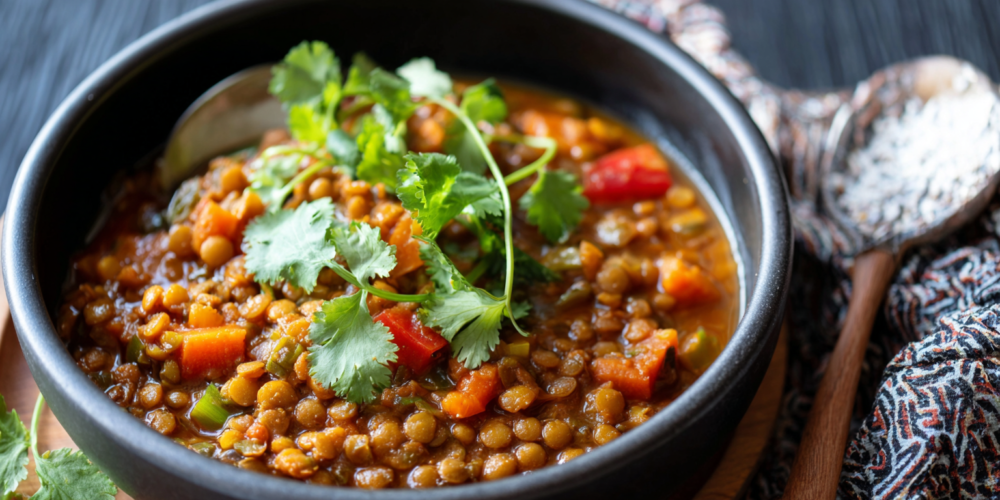
Have you noticed that your strength isn’t what it used to be? Losing muscle mass and power, a condition known as sarcopenia, is a reality that affects many of us after the age of 50. It can make everyday tasks feel more difficult and impact your overall vitality. While this is a natural part of aging, it’s not something you have to passively accept. The right nutrition can dramatically slow down and even reverse some of this muscle loss. However, the market is flooded with products sold as easy protein fixes that can often do more harm than good. That’s why today, we’re going to cut through the noise and discover the seven powerful, whole foods that genuinely rebuild your strength, and I’ll show you exactly how to prepare them to truly notice a difference. (Based on the knowledge of Dr. Iñigo Martín)
Key Takeaways
- Prioritize Whole Foods: True muscle-building power comes from natural, unprocessed foods, not from expensive, sugar-laden protein bars, processed meats, or chemical-filled shakes.
- Complete Proteins are Key: Foods like quinoa and tofu provide all nine essential amino acids your body needs to repair and build muscle tissue effectively.
- Smart Carbs for Sustained Energy: Carbohydrates from sources like sweet potatoes and oats provide a slow, steady release of energy, fueling your muscles for hours without the crash.
- Minerals Matter: Essential minerals like potassium, magnesium, iron, and manganese play crucial roles in muscle contraction, relaxation, oxygen transport, and energy production. Foods like almonds, lentils, and chickpeas are packed with them.
- Preparation is Everything: Simple techniques like soaking oats and grains, pressing tofu, and activating nuts can neutralize anti-nutrients and unlock the full nutritional potential of these foods, making them more digestible and effective.
The Billion-Dollar Trap: Why Processed Proteins Are Sabotaging You

Before we dive into the foods that strengthen you, I need to warn you about a trap that many people fall into without realizing it. The food industry has turned protein into a multi-billion dollar business, selling you the idea that you need fast, convenient, ready-to-eat protein. But what they don’t tell you is that these ultra-processed products can sabotage your muscle recovery while emptying your wallet.
Let’s start with protein bars. You see them everywhere, costing a small fortune and promising 20 grams of protein. But have you ever looked at the label? The second ingredient is often glucose syrup or maltodextrin. You’re essentially eating a candy bar in disguise. That sugar spikes your insulin, which halts muscle building and promotes fat storage. If you feel bloated or need to lie down on the couch after eating one, your body is telling you that it’s not real food.
Then we have processed meats, including so-called ‘healthy’ vegetable sausages. They seem like a good option, but a single small portion can contain up to 400 mg of sodium. Four slices and you’ve hit half your daily sodium limit. This excess salt causes water retention, raises your blood pressure, and makes it harder for nutrients to reach your muscles. But the worst part is the nitrites used as preservatives, which can convert to nitrosamines in your stomach. These compounds are inflammatory and have been linked to gastric and colon cancer. While one sandwich won’t cause cancer, we now know that frequent consumption increases the long-term risk.
Finally, supermarket protein shakes are another well-packaged deception. The base protein might be decent, like pea or soy, but read the full ingredient list: sucralose, acesulfame K, xanthan gum, artificial flavorings. Your gut doesn’t recognize these chemicals and treats them as invaders. While your body is busy fighting them off, it can’t focus on building muscle. If you experience gas, stomach pain, or sudden fatigue after drinking a low-quality shake, it’s your gut crying out for help. If you’re looking for a protein powder, the label should have just one ingredient: the protein powder itself. The uncomfortable truth is that these products often create more inflammation than nutrition. Instead of spending $15 on a box of bars, you can make your own energy balls with dates, almonds, and pure cocoa for a fraction of the cost, providing real fuel without mysterious chemicals.
7. Quinoa: The Complete Plant-Based Protein

When we talk about rebuilding muscle, many people immediately think of meat and shakes, but quinoa offers something few grains can: complete protein with all nine essential amino acids. Think of each grain of quinoa as a tiny muscle repair factory. Your muscle fibers tear and rebuild every day, and they need specific amino acids to do so. Quinoa has them all. While rice or pasta primarily gives you energy, quinoa repairs and fuels your body at the same time.
But there’s more. Quinoa releases its energy slowly, over hours. It’s not that quick rush from white bread that leaves you exhausted two hours later. Half a cup at breakfast gives your body stable fuel until lunch, with no energy slumps. To get the most out of it, be sure to rinse it under the tap for 30 seconds. This removes the saponins, the bitter compounds that protect it in nature. Try cooking it with vegetable broth instead of water to multiply its flavor, and mix it with some of the legumes we’ll discuss later. This creates a plant-based protein bomb that your muscles will thank you for.
6. Sweet Potato: The Intelligent Fuel Source

If quinoa repairs your muscle fibers, our next food does something even more important: it gives you the fuel to keep them active for hours without the fatigue that drains your strength mid-afternoon. I’m talking about the sweet potato. The sweet potato is pure, intelligent energy. Its carbohydrates are released like a steady drip, not a flood, so your pancreas doesn’t have to work overtime producing insulin. It’s the difference between driving with a full tank and having to stop to refuel every 20 miles.
But the best-kept secret of the sweet potato is its potassium. A single medium sweet potato contains 540 mg, more than a banana. Potassium is the mineral that controls every single muscle contraction. Without it, your muscles operate at half-speed, contracting poorly and relaxing even worse, leading to those cramps that wake you up at night. Furthermore, sweet potatoes combine potassium with magnesium. These two minerals work as a team: potassium gives the order to contract, and magnesium gives the order to relax. The carotenoids, those orange pigments, protect your muscle cells from daily wear and tear. You can see it as an invisible shield protecting your strength. To get the most benefit, bake it whole with the skin on at 400°F (200°C) for 45 minutes. The skin is packed with nutrients and fiber.
5. Chickpeas: The Economical Powerhouse

If you’re looking to build muscle without breaking the bank, chickpeas are your best ally. A can of cooked chickpeas costs less than a dollar and gives you 15 grams of clean protein. Compare that to any processed bar; chickpeas win every time, not just in price but in what they do for your body. Each chickpea is a small amino acid power plant. One cooked cup contains almost half the protein you need to repair the daily micro-tears in your muscles. When you walk, climb stairs, or carry groceries, your muscle fibers break down microscopically. This is normal and necessary, but without amino acids to repair them, those fibers don’t rebuild stronger; they weaken. Chickpeas provide that raw material.
The manganese in chickpeas is the invisible worker no one talks about. This mineral activates the enzymes that convert nutrients into usable energy. Without manganese, you could eat all the protein in the world, and your muscles wouldn’t know what to do with it. The great news is that one cup of chickpeas provides 85% of your daily manganese needs. Another hidden treasure is folate, which you need to create new cells, including muscle cells. If you feel your recovery after exercise is slow, it could be a sign of folate deficiency. To make them even better, soak them overnight with a pinch of baking soda to neutralize phytates and reduce gas. You can make hummus on Sunday for a week’s worth of protein or use them as a base for veggie burgers.
4. Lentils: The Muscle-Building Switch

Lentils hold a secret that the supplement industry doesn’t often talk about: they are incredibly rich in leucine. Leucine is the amino acid that acts as the master switch for muscle protein synthesis. When leucine reaches your cells, it activates a protein called mTOR, which gives the command to build new muscle. A cup of cooked lentils has 1.3 grams of leucine. To effectively trigger muscle building, you need about 2.5 grams. If you combine lentils with brown rice or a handful of nuts, you have the perfect dose.
What does this mean for your day-to-day life? If you add a cup of lentils to your lunch, your body enters construction mode for the next three to four hours. It’s not magic; it’s pure biochemistry working while you go about your life. The combination of protein and fiber in lentils gives you a steady drip of amino acids to your muscle fibers for hours. No spikes, no crashes—just sustained nutrition. If you often feel tired, even after a full night’s sleep, your body might be crying out for iron. Lentils are a mine of plant-based iron. Cooking them with tomatoes can triple the iron absorption thanks to the vitamin C. If you buy them dry, soak them for four hours with a teaspoon of apple cider vinegar to make them more digestible.

